Vietnam is a land of breathtaking natural beauty and rich cultural diversity. From its dynamic megacities to its serene hill-tribe villages, this country offers an unforgettable experience that captivates the senses and leaves a lasting impression.
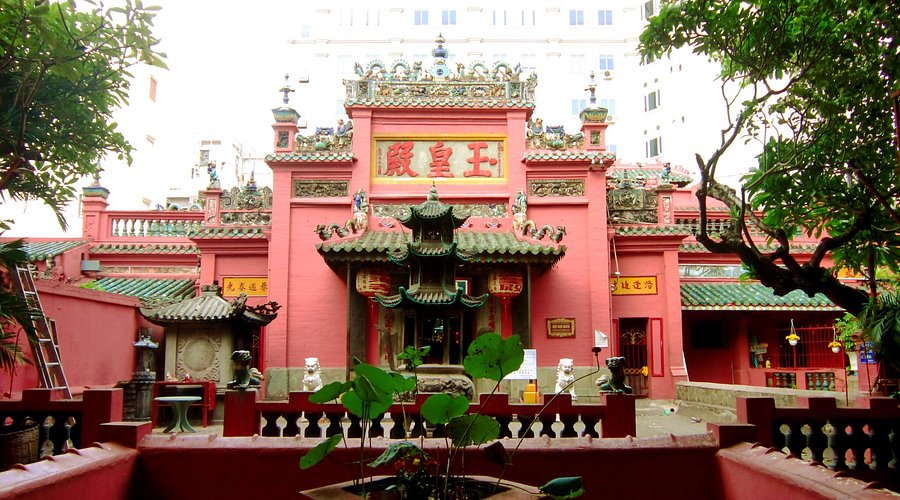
Jade Emperor Pagoda (Chua Ngoc Hoang), built in 1909, stands as one of Ho Chi Minh City’s most atmospheric temples, dedicated to the supreme Taoist god, the Jade Emperor (Ngoc Hoang), also known as the King of Heaven. The temple is filled with statues of otherworldly deities and heroic figures, creating an intriguing blend of Taoist and Buddhist influences.
As you enter, the air is thick with the aromatic smoke of incense (huong), which blends with the intricate woodcarvings and the temple’s vibrant tile work on the roof. The statues within are crafted from reinforced papier mâché, depicting characters from both Buddhist and Taoist traditions.
The temple’s alternative name, Phuoc Hai Tu (福海寺), meaning “Sea of Blessing Temple,” emphasizes its Buddhist message, mirrored by the Chinese characters on the main altar, which read “The light of Buddha shines on all” (佛光普照).
Inside the main hall, two fierce Taoist generals stand out: on the right is a towering 4m-high statue of the general who defeated the Green Dragon, while on the left is the general who conquered the White Tiger. Worshippers gather before the Jade Emperor, whose lavishly draped figure, enveloped in incense smoke, commands the sanctuary. He is surrounded by the Four Big Diamonds (Tu Dai Kim Cuong), whose names suggest their indomitable strength.
A left-side door leads to another fascinating room. Here, Thanh Hoang, the Chief of Hell, presides over a room where depictions of gods in charge of punishing the wicked and rewarding the virtuous are displayed. The Hall of the Ten Hells features carved wooden panels illustrating the gruesome torments reserved for the evil across each of Hell’s ten regions.
Nearby, a ritual draws women to the City God effigy, where they place money in a box, rub red paper against the figure’s hand, and circle it around a candle flame in a mesmerizing act of devotion. Another room contains ceramic figures of 12 women representing each year in the Chinese zodiac, showcasing different human traits, both good and bad.
Upstairs, a hall is dedicated to Quan Am, the Goddess of Mercy, opposite a portrait of Dat Ma, the Indian founder of Zen Buddhism. Outside, a small pond teems with turtles, some marked with auspicious inscriptions.
Entrance: Free, though donations are welcomed.
Dress Code: While there’s no strict dress code, it’s respectful to wear clothing that covers shoulders and knees.
Best Time to Visit: The temple can get crowded, especially during the day. Arriving early is advised to avoid the busiest times.

War Remnants Museum, located in Ho Chi Minh City, offers a powerful and sobering perspective on the US invasion of Vietnam, making it an essential visit for anyone seeking to understand the devastating impact of the war on the country’s civilians. While many of the atrocities documented here are well known, the museum stands out for providing a platform for the victims of US military actions to share their side of the story.
Though the exhibits are mostly presented from a Vietnamese viewpoint, many of the graphic images of wartime atrocities come from US sources, including the harrowing photographs from the My Lai Massacre, where over 500 unarmed South Vietnamese civilians were killed by US soldiers.
Even travelers with little interest in the war should not miss this museum. Its compelling exhibits offer invaluable insight into a defining chapter of Vietnam’s history and provide a deeper understanding of present-day Vietnam. It’s recommended to allocate at least a couple of hours for a visit.
Historical Context: Originally known as the Museum of Chinese and American War Crimes, the museum focuses primarily on the American War but also touches on the French-colonial period and Vietnam’s conflicts with China.
Outdoor Displays: The grounds feature US armoured vehicles, artillery, bombs, and infantry weapons. One corner is dedicated to the notorious French and South Vietnamese prisons on Phu Quoc and Con Son islands, with artefacts such as the guillotine and the infamous ‘tiger cages’ used for housing prisoners.
Ground Floor Exhibits: Here, visitors can view a collection of posters and photographs highlighting international support for the antiwar movement, providing a counterpoint to the more disturbing displays upstairs.
Upstairs Exhibits: The upstairs section includes the Requiem Exhibition, curated by legendary war photographer Tim Page, showcasing the work of photographers who lost their lives during the war. It includes images by renowned photographers such as Larry Burrows and Robert Capa.
Many of the photographs on display are distressing, including those showing the devastating effects of Agent Orange and napalm on the Vietnamese population. Some visitors may find it necessary to take breaks between exhibits due to their graphic nature. The museum also offers a rare opportunity to see experimental weapons once considered military secrets, such as the flechette, an artillery shell filled with tiny darts.
Ticket Prices: 40,000d for adults, 20,000d for children aged 6-16, and free for children under 6.
Location: The museum is housed in the former US Information Service building. Captions are provided in both Vietnamese and English.
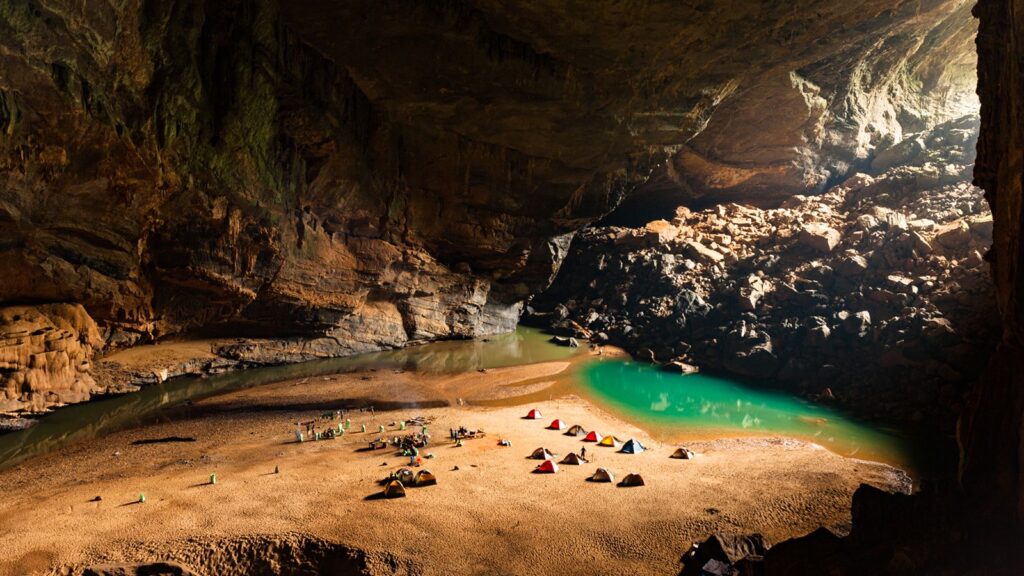
Hang Son Doong, or Mountain River Cave, located in the heart of Phong Nha-Kẻ Bàng National Park, is renowned as the world’s largest cave and one of Southeast Asia’s most awe-inspiring natural wonders. Known for its colossal size, it is also one of the most exclusive travel destinations. Access to the cave was approved by the Vietnamese government only in 2013, and the sole operator permitted to conduct tours is Oxalis Adventure, based in Son Trach. The cave’s four-day, three-night expedition comes with a steep price of US$3000 per person, and tours are strictly limited to 10 trekkers per group, each accompanied by a team of porters and cooks.
The discovery of Hang Son Doong is relatively recent. In the early 1990s, Ho Khanh, a local hunter from a settlement near the Vietnam-Laos border, often took shelter in the caves scattered throughout his mountainous homeland. He stumbled upon Hang Son Doong but didn’t realize the true magnitude of the cave until British explorers joined him in 2009 to investigate further. Upon their return, the cave was confirmed as the world’s largest, with the main cavern stretching over 5km long, 200m high, and up to 150m wide in places.
One of the expedition team’s biggest challenges was overcoming a massive overhanging barrier of muddy calcite, which they dubbed the ‘Great Wall of Vietnam’, that split the cave in two. Once this obstacle was crossed, the full scale of Hang Son Doong was revealed – a cavern large enough to fit a battleship. The cave is pierced by skylights that illuminate its ethereal stalagmites, famously known as the Cactus Garden, with some reaching up to 80m in height. Explorers have also discovered colossal cave pearls, measuring up to 10cm in diameter, formed over millennia as calcite crystals fused with sand grains. In addition, beautiful rimstone pools and underground rivers, ideal for swimming, are found throughout the cave.
Access to Hang Son Doong is exclusive to Oxalis Adventure, and tours can be booked through their website. Given the limited spots, booking well in advance is essential. The four-day, three-night expedition is physically demanding, involving tough trekking, underground river crossings, and technical caving elements. Anyone who struggles significantly with the climbing aspects of the tour will be turned back on the first day. During the expedition, participants stay in basic yet breathtaking campsites set up inside the cave. The tour season runs from January to August.
For those seeking a less strenuous experience, Oxalis Adventure also offers shorter, more affordable tours to other caves in Phong Nha-Kẻ Bàng National Park, as well as various explorations around the park.

Thien Mu Pagoda, perched on a small hill overlooking the Song Huong (Perfume River), is located about 4km southwest of the Citadel. This seven-storey pagoda is a symbol of Hue and stands as a powerful icon of Vietnam, as recognizable as the Citadel itself. The 21m-high octagonal tower, Thap Phuoc Duyen, was constructed in 1844 during the reign of Emperor Thieu Tri. Each storey of the tower is dedicated to a different manushi-buddha (a Buddha who appeared in human form).
The pagoda was originally founded in 1601 by Nguyen Hoang, the governor of Thuan Hoa province. Over the centuries, the buildings have been destroyed and rebuilt multiple times. Since the 1960s, the pagoda has been a significant site for political demonstrations. One of the most notable moments in its recent history occurred in 1993, when a man, after offering prayers, self-immolated in front of the pagoda while chanting the word ‘Buddha.’
To the right of the pagoda tower is a pavilion that houses a 1715 stele (stone tablet) set on the back of a massive marble turtle, a symbol of longevity. On the left side of the tower is another six-sided pavilion, which shelters a massive bell from 1710, weighing 2052kg, with its sound audible up to 10km away.
Behind the pagoda tower lies a gateway, where the effigy of the Celestial Lady (Thien Mu), after whom the pagoda is named, sits on the upper floor. Above the central portal is a sign inscribed with the Chinese characters 靈姥寺 (literally ‘Divine Old Woman Temple’), honoring the presiding deity of the land.
The temple itself is a modest building located in the inner courtyard, beyond a triple-gated entrance guarded by three statues of Buddhist protectors. Inside the main sanctuary, behind the bronze laughing Buddha, there are three notable statues: A Di Da (the Buddha of the Past), Thich Ca (the historical Buddha, Sakyamuni), and Di Lac Buddha (the Buddha of the Future).
Entrance to Thien Mu Pagoda is free. To avoid the crowds, it’s best to visit in the morning before the larger tour groups arrive.
Many visitors to Hue also explore Thien Mu Pagoda by boat along the Perfume River. Shared day tours are available from most hotels and local cafes, typically costing US$5 to US$20 per person.
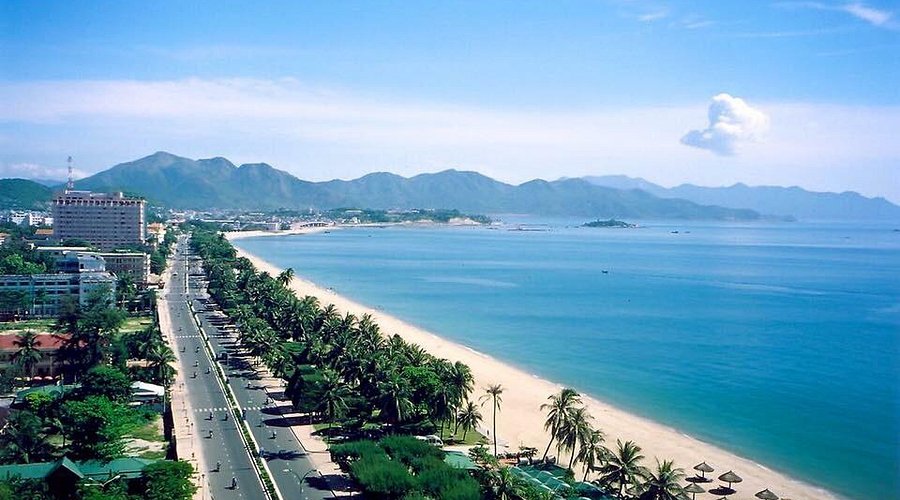
Nha Trang Beach, stretching for 6km along the coastline, is the city’s most iconic feature, with its golden sands and inviting turquoise waters. The beach is roped off into sections for safe swimming, ensuring a peaceful experience free from jet skis or boats. The promenade is perfect for a leisurely stroll.
Popular spots for lounging include the Sailing Club and Louisiane Brewhouse. The Sailing Club is also a hub for beach parties, with dancing on the sand most nights, especially on Saturdays. If you prefer a quieter experience, head south where you’ll find less crowded stretches of sand. The best time for beach lounging is generally before 1pm, as afternoon sea breezes can stir up the sand.
During heavy rains, runoff from the rivers at each end of the beach can turn the water murky, but the sea is usually crystal-clear most of the year, as seen in travel brochures.
Nha Trang offers a wide range of accommodations, from budget dorms to luxury suites, most within a block or two of the beach. During high season (July and August), prices rise, and it can be challenging to find a room.
Luxury hotels and international chains, like the Sheraton and Novotel, line Ð Tran Phu, the waterfront boulevard. The most exclusive resorts, however, are located out of town in Ninh Van Bay to the north. For a more local flavor, spots like Sunny Sea offer a unique atmosphere.
For budget options, head to an alleyway at 64 Ð Tran Phu, where you’ll find inexpensive, air-conditioned rooms for around US$15. Hostels are located a bit inland from the beach, with good options like Mojzo Inn Boutique and iHome.
If you’re looking for a hotel right on the beach, the Evason Ana Mandara Resort Spa is your best choice. Additionally, there are some homestays at the southern edge of the beach. Most other accommodations are located on the city side of the promenade.
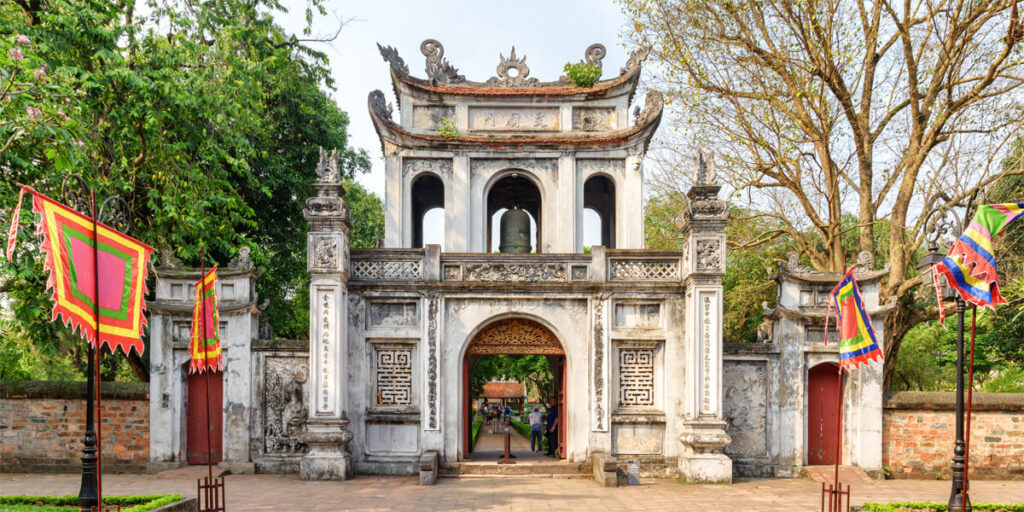
The Temple of Literature is located amidst beautifully landscaped grounds near the heart of Hanoi. Honoring Vietnam’s greatest scholars, it offers a glimpse into traditional Vietnamese architecture and history.
Founded in 1070 by Emperor Le Thanh Tong, the temple is dedicated to the philosopher Confucius and was the site of Vietnam’s first university, Quoc Tu Giam, established in 1076. The temple’s altars are popular with students who pray for good grades, while the halls, ponds, and gardens across five courtyards create picturesque settings for graduation photos. The temple is even depicted on the 100,000d note.
Originally, university admission was limited to those from noble families, but by 1442, it became more inclusive. Talented students from all over Vietnam came to study Confucianism, literature, and poetry. In 1484, Emperor Ly Thanh Tong ordered the creation of stelae to honor exceptional scholars. Today, 82 of the original 116 stelae remain, mostly perched atop turtle statues. Visitors can explore the grounds, with paths leading from the imposing tiered gateway on P Quoc Tu Giam to the Khue Van Pavilion, built in 1802.
Entry Fees:
Adults: 30,000d
Students: 15,000d
Hanoi offers a range of accommodations to suit all budgets. For a small extra fee of US$10 to $20, you can upgrade from a basic room to a larger, more comfortable space with a view. A few excellent options within walking distance of the Temple of Literature include Tomodachi House (a 15-minute walk) and Somerset Grand Hanoi (a 17-minute walk).
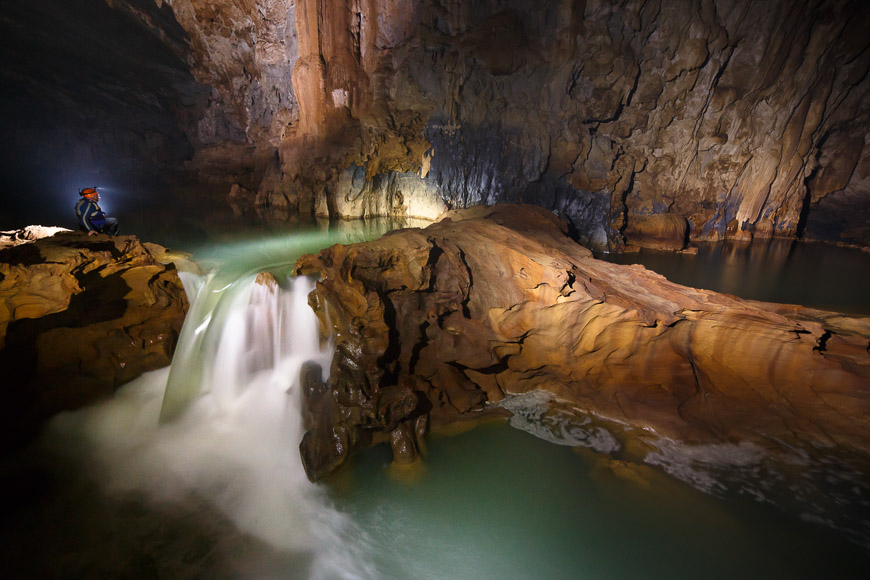
The Tu Lan Cave System consists of over 20 wet and dry caves estimated to be three to five million years old. Located just outside Phong Nha-Ke Bang National Park, these caves feature immense caverns, underground rivers, and dramatic stalactites, attracting adventurers and spelunkers from around the world. The surreal landscape even drew the attention of Hollywood — Tu Lan served as a filming location for Kong: Skull Island (2017).
While local communities have known about the caves for generations, Tu Lan was first documented by the British Cave Research Association in 1992. A more extensive survey in 2010 uncovered the true scale of the cave system. That expedition included consultants to Oxalis, the only licensed tour operator currently offering guided cave tours in Tu Lan.
Tu Lan can be explored on one- to four-day tours, all organized by Oxalis.
Each tour begins with a scenic hike through the countryside, passing peanut fields and grazing cattle, before reaching the cave entrances. Every itinerary includes at least two cave visits and a swim in an underground river.
Longer tours allow visitors to explore more caves — both wet and dry — and include overnight stays at remote campsites.
The four-day expedition features the chance to abseil into a cave, adding an extra thrill for serious adventurers.
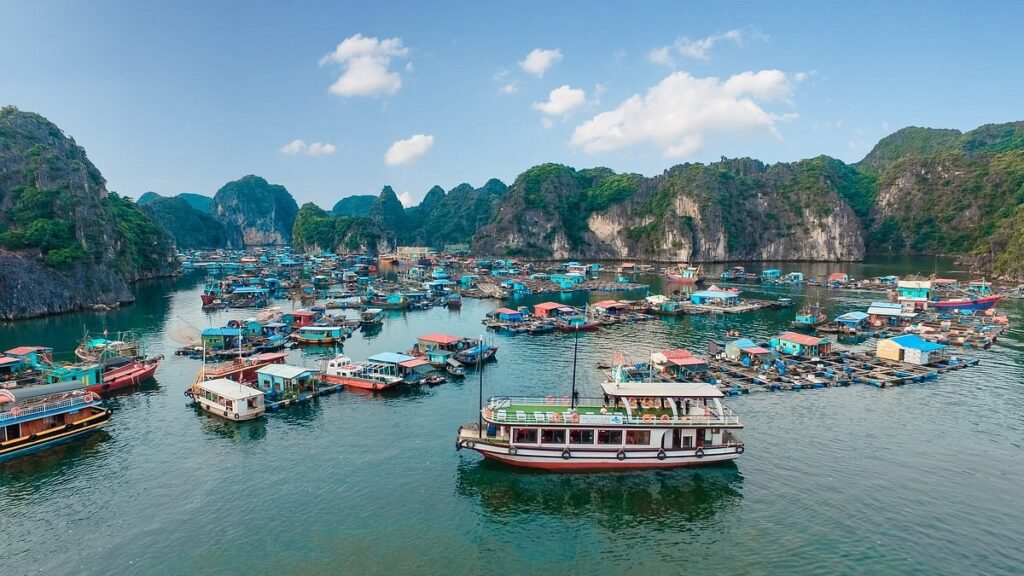
Located to the south of the famous Halong Bay off Vietnam’s northeast coast, Lan Ha Bay boasts around 300 karst islands and limestone outcrops, offering scenery just as striking as its renowned neighbour — but with a quieter, more pristine atmosphere. One of Lan Ha’s standout features is its white-sand beaches, which are largely absent in Halong Bay.
Though part of the same geological formation as Halong, Lan Ha lies in a different province, and is considered a hidden gem. The bay’s waters are teeming with life:
200+ fish species
500 mollusc species
400 arthropod species (such as crabs and prawns)
Rich coral ecosystems (both hard and soft)
You might even spot seals or one of three dolphin species known to frequent the area.
The best way to experience Lan Ha Bay is on an overnight boat tour, which typically includes:
A visit to secluded beaches
Kayaking through quiet lagoons
Optional hiking, rock climbing, or island homestays
Tours can be arranged from Cat Ba Island or directly from Hanoi. Packages range from:
1-day tours
2 days/1 night
3 days/2 nights
Prices usually include entrance fees. For an authentic, locally-run experience, consider Cat Ba Ventures, which offers overnight cruises from around US$136 per person.
WhatsApp us